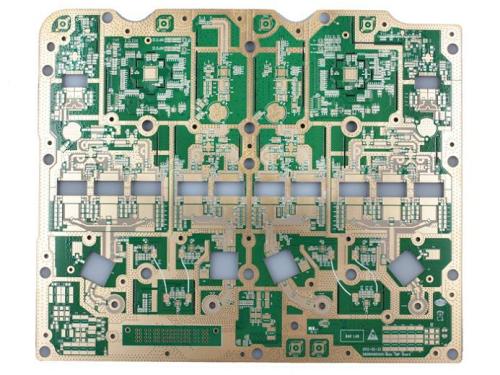 +86 755 2794 4155
+86 755 2794 4155  sales@knownpcb.com
sales@knownpcb.com
-
Shenzhen KNOWNPCB Technology Co., Ltd.
 +86 755 2794 4155
+86 755 2794 4155  sales@knownpcb.com
sales@knownpcb.com
 2024-11-05
2024-11-05
 685
685

PCB (Printed Circuit Board) board welding is a critical process in electronics manufacturing, and there are several national standards in place to ensure the quality and reliability of the soldered connections.
1. Soldering Material Standards
The choice of soldering materials, such as solder paste and solder wire, is governed by specific standards. For solder paste, its composition, including the ratio of tin, lead (in lead containing solders), and other alloying elements, is precisely defined. The viscosity of the solder paste is also a crucial parameter as it affects the printing accuracy and the ability to hold components in place during reflow soldering. In the case of solder wire, its diameter and the content of flux are standardized. Flux helps in cleaning the metal surfaces to be soldered and promotes the wetting of the solder, ensuring a good bond. The flux content and its activity level are specified to meet different soldering requirements, such as for through hole components or surface mount components.
2. Soldering Process Standards
For through hole soldering, the hole to lead ratio is an important aspect. The hole diameter should be designed to provide an appropriate fit for the component lead. A proper fit ensures good solder flow around the lead and mechanical stability. The soldering temperature and time are also carefully controlled. Excessive temperature can damage components or the PCB substrate, while insufficient temperature may lead to cold solder joints. In reflow soldering for surface mount components, the temperature profile is a key standard. It typically includes pre heat, soak, reflow, and cooling stages. The pre heat stage helps to evaporate any solvents in the solder paste and reduce thermal shock. The reflow temperature must be precisely maintained to ensure the solder melts and forms a proper joint. Cooling should be done at an appropriate rate to prevent the formation of brittle solder joints.
3. Quality Inspection Standards
Visual inspection is a fundamental part of the quality control process. The soldered joints should have a smooth, shiny appearance, without any signs of porosity, cracks, or excessive solder. The shape of the joint should conform to the expected geometry, such as a fillet shape around through hole leads. For surface mount components, the solder should wet the pads completely and form a reliable connection without any bridges between adjacent pads. In addition to visual inspection, there are non destructive testing methods such as X ray inspection. X ray can penetrate the PCB and reveal internal solder joint defects, such as voids or hidden bridges. Electrical testing is also essential to ensure the conductivity of the soldered connections. Resistance measurements can be taken to confirm that the resistance of the joint is within an acceptable range and that there are no open circuits or short circuits.
4. Environmental and Safety Standards
The soldering process must comply with environmental and safety regulations. The use of lead free solders has become a global trend due to environmental concerns. Lead free solders have different melting points and wetting characteristics compared to traditional lead containing solders, and the standards ensure that the soldering process is adjusted accordingly. In addition, the handling and disposal of soldering materials, especially those containing hazardous substances such as certain fluxes, are regulated. The work environment should also be maintained in a way that protects the workers from fumes and other potential hazards. Adequate ventilation systems are required to remove the soldering fumes, which may contain harmful chemicals.

Or call +86 755 2794 4155
Inquiry Now

